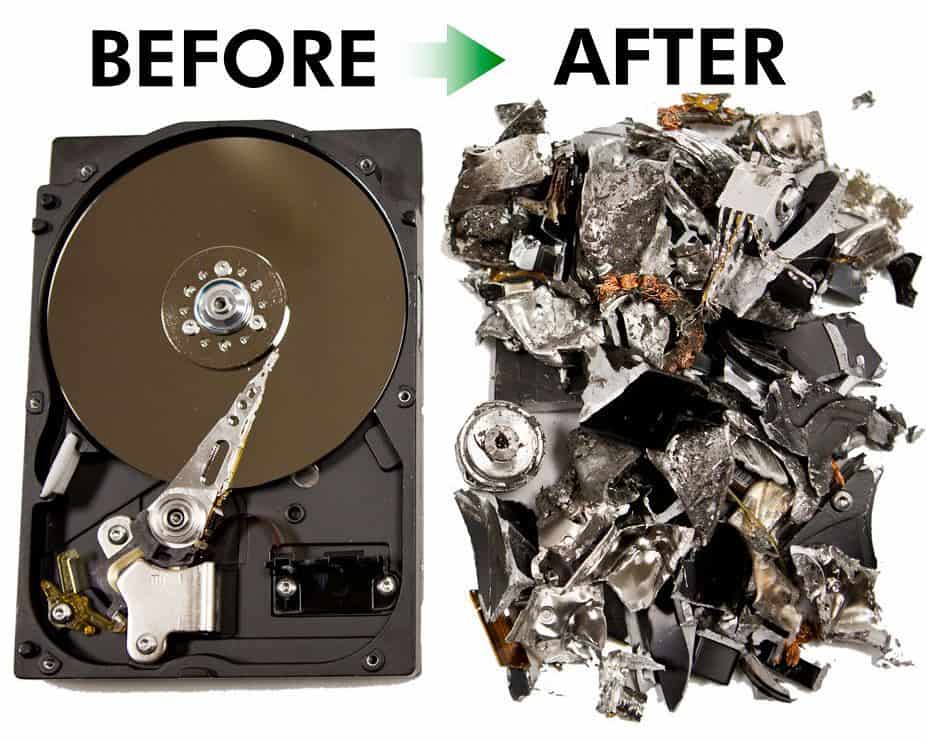Data Destruction Solutions: A Key Element in Your Cyber Security Strategy
Data Destruction Solutions: A Key Element in Your Cyber Security Strategy
Blog Article
Discovering the Value of Information Destruction in the Context of Computer System Safety Solutions and Protecting Confidential Information
In an era where information violations are progressively common, the significance of effective data devastation can not be overstated. What strategies can organizations apply to improve their data devastation protocols?
Recognizing Data Damage
Data devastation is a crucial part of computer system safety and security that involves the long-term elimination of information from storage devices to stop unapproved access and possible data breaches. In a significantly digital landscape, organizations face increased threats connected with delicate details being incorrectly accessed or made use of. Effective data destruction safeguards versus these dangers, ensuring that private dataâEUR" such as client information, intellectual building, and economic recordsâEUR" can not be recovered after disposal.
Recognizing the significance of data devastation prolongs beyond mere conformity with lawful and regulatory structures; it is vital for preserving organizational honesty and trust fund. When data is poorly handled or improperly destroyed, the effects can be extreme, including financial loss, reputational damage, and lawful liabilities.

Approaches of Information Eradication

One prevalent technique is data cleaning, which includes overwriting existing information with arbitrary patterns multiple times. This technique provides the original information irretrievable, making it a preferred option for organizations seeking to shield secret information.
One more method is degaussing, which uses an effective magnetic field to interfere with the magnetic domains on storage devices, effectively eliminating the information. This technique is specifically reliable for magnetic media however is not appropriate to solid-state drives.
Physical devastation is an additional robust method, entailing the shredding or crushing of storage space tools. This approach assurances that data healing is virtually impossible, making it optimal for very delicate info.
Finally, encryption can act as a complementary approach to data obliteration. By securing data prior to removal, companies can include an added layer of safety and security, ensuring that also if remnants are recovered, they continue to be hard to reach without the decryption key. Each approach must be chosen based on the degree of information level of sensitivity and the particular security needs of the organization.
Legal Compliance and Information Safety
Organizations must navigate an intricate landscape of lawful demands associated with information safety, specifically after executing techniques of information obliteration. Numerous policies, such as the General Data Defense Law (GDPR) and the Medical Insurance Portability and Responsibility Act (HIPAA), impose rigid standards on how organizations have to take care of and get rid of of delicate information. Failing to follow these policies can result in substantial legal effects, consisting of significant penalties and reputational damages.
Data devastation processes need to be meticulously documented to show compliance with relevant regulations and standards. This documentation not just functions as evidence of adherence to lawful responsibilities however also illustrates a dedication to protecting delicate details. Organizations should likewise develop clear plans relating to data retention and damage timelines, guaranteeing that information is not held longer than necessary.

Moreover, regular audits and evaluations of data devastation techniques are important to preserve conformity and adapt to progressing legal structures (data destruction). By proactively attending to legal demands, companies can reduce threats connected with data violations and show their commitment to data safety. Eventually, prioritizing legal conformity in data damage procedures is not just a governing obligation, but an essential facet of a durable information safety approach
Influence On Business Track Record
The reputation of an see this page organization can be substantially influenced by its approach to information damage and management. In today's digital landscape, where information violations can occur anytime, the failing to properly deal with delicate information can lead to serious consequences. Organizations that inadequately take care of information damage threat exposing private customer details, which not just breaches privacy laws yet also wears down depend on among customers and stakeholders.
A ruined reputation can lead to reduced customer commitment, as customers end up being hesitant to engage with an organization that has actually demonstrated oversight in shielding their information. In addition, negative publicity surrounding a data breach can have a long-term result, as potential consumers may be prevented by the regarded lack of safety. This can result in a straight decline in revenue and market share.
Furthermore, services that focus on information devastation as component of their safety and security technique can improve their reputation by showcasing their commitment to guarding sensitive info. By embracing rigorous data management techniques, companies can not only mitigate dangers yet additionally position themselves as reliable entities in their corresponding sectors, therefore reinforcing their overall brand photo.

Best Practices for Secure Disposal
Executing best methods for protected disposal of data is crucial for reducing dangers connected with data breaches and making sure compliance with personal privacy guidelines. Organizations must take on a thorough data disposal policy that outlines procedures for both physical and digital information damage.
For physical data storage tools, such as hard drives, shredding or degaussing is advised to avoid data healing. In addition, companies must keep a chain of safekeeping paperwork during the disposal process, making certain accountability and traceability of disposed products.
For electronic information, utilizing software that adheres to industry requirements for information cleaning is crucial. This software application ought to overwrite existing information multiple times, making healing virtually impossible. It is additionally vital to confirm the effectiveness of the information damage procedure via audits or third-party analyses.
Educating employees on safe disposal techniques includes an additional layer of security, as human error can often cause information exposure. Routinely reviewing and updating disposal policies makes sure alignment with advancing regulations and technical innovations. By carrying out these best practices, look at this website organizations can significantly decrease the danger of unauthorized data access and enhance their general information protection technique.
Conclusion
Finally, data destruction is a basic aspect of computer system protection solutions that informative post makes sure the security of personal details from unapproved gain access to. Carrying out reliable techniques of data obliteration, adhering to lawful conformity, and identifying the influence on organization online reputation are necessary components of an extensive information safety method. By embracing finest techniques for protected disposal, organizations can cultivate depend on with customers and safeguard sensitive information, ultimately contributing to an extra protected electronic landscape.
In a period where data breaches are increasingly usual, the significance of effective data devastation can not be overemphasized.Information devastation is a vital part of computer protection that involves the long-term elimination of data from storage space gadgets to stop unapproved gain access to and potential information violations. Organizations should likewise develop clear policies pertaining to information retention and destruction timelines, making sure that information is not held longer than needed.
By proactively attending to legal requirements, companies can alleviate threats associated with information violations and demonstrate their commitment to data safety and security (data destruction). Ultimately, focusing on lawful compliance in information devastation procedures is not just a regulative responsibility, however a fundamental facet of a robust data protection strategy
Report this page